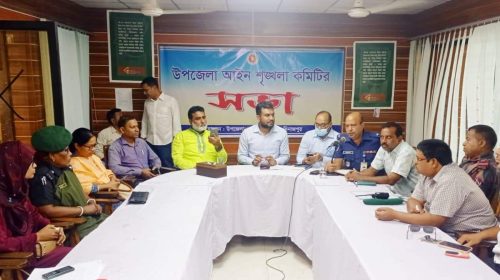The Tree Seedling Market: An Emerging Trend in Sustainability and Growth
The tree seedling market https://atkinstreefarm.com/ is undergoing significant transformation as sustainability and environmental conservation continue to gain global attention. The importance of trees in combating climate change, restoring ecosystems, and providing essential services like air purification and water conservation cannot be overstated. As more individuals, companies, and organizations recognize these benefits, the demand for tree seedlings is increasing across various sectors. This article delves into the factors driving the growth of the tree seedling trade, highlights opportunities for sellers, and offers practical advice for buyers navigating this expanding market.
Why the Demand for Tree Seedlings is Growing
Tree seedlings are vital for various reasons, ranging from ecological restoration to agricultural production. As awareness of environmental issues and the need for sustainability spreads, tree planting initiatives are becoming a priority. Here are some of the primary factors driving the growing demand for tree seedlings:
- Climate Change Mitigation: Trees are essential in the fight against climate change. They absorb carbon dioxide (CO2) from the atmosphere and store it, which helps mitigate the impact of greenhouse gases. As governments, corporations, and individuals increase their focus on carbon offsetting, tree planting initiatives—often involving the purchase of tree seedlings—are gaining traction. This has created a growing market for tree seedlings that contribute to climate change mitigation.
- Biodiversity Preservation and Reforestation: Deforestation remains a significant issue, and tree planting plays a vital role in reversing the damage caused by land degradation. Seedlings are at the heart of reforestation projects, which help restore ecosystems, improve wildlife habitats, and protect biodiversity. Various governments, non-governmental organizations (NGOs), and environmental groups are actively involved in large-scale reforestation projects, which, in turn, are boosting the demand for tree seedlings.
- Urban Greening and Landscape Enhancement: The push for urban greening has gained momentum as cities around the world seek to increase green spaces for aesthetic, social, and environmental reasons. Tree seedlings are a crucial element in creating tree-lined streets, parks, and public spaces, which help improve air quality, reduce the heat island effect, and enhance the well-being of urban populations. The demand for seedlings in landscaping projects is expected to rise as cities prioritize the creation of green environments.
- Sustainable Agriculture and Agroforestry: Trees are integral to sustainable farming practices. Fruit-bearing trees, timber trees, and nut trees provide essential resources for food production, income generation, and land conservation. Agroforestry systems, which combine agriculture with tree planting, are becoming more popular among farmers who wish to diversify their crops while promoting environmental sustainability. As the demand for sustainable agriculture grows, so does the need for tree seedlings.
Opportunities for Sellers in the Tree Seedling Market
The growing demand for tree seedlings offers substantial opportunities for sellers to capitalize on this expanding market. Sellers can position themselves for success by taking advantage of the following strategies:
- Diverse Product Portfolio: One of the key advantages sellers have is the ability to offer a diverse range of tree seedlings for different purposes. Whether it’s fruit trees for agricultural use, ornamental trees for landscaping, or native species for reforestation, sellers can cater to various market segments. Offering multiple species and product types enables sellers to meet the specific needs of both individual consumers and large-scale buyers such as NGOs, environmental agencies, and corporations.
- Focus on Sustainability: As eco-consciousness grows among consumers, sellers who emphasize sustainable growing practices and environmental stewardship will attract a more loyal customer base. Using organic methods, offering seedlings grown in biodegradable pots, and minimizing the environmental impact of production can help sellers stand out. Providing certifications such as “organic” or “sustainably sourced” can also enhance credibility and appeal to a growing group of environmentally aware buyers.
- E-Commerce and Digital Presence: The rise of online shopping has transformed the way buyers purchase tree seedlings. Sellers who embrace e-commerce platforms can expand their reach beyond local markets and tap into national and international demand. By utilizing websites, social media platforms, and online marketplaces, sellers can connect with a broader customer base. Additionally, digital platforms allow sellers to provide valuable resources, such as planting instructions, tree care tips, and customer support, enhancing the overall customer experience.
- Bulk Sales and Long-Term Contracts: Large-scale projects, such as reforestation initiatives, urban greening, and government-backed environmental efforts, often require bulk orders of tree seedlings. Sellers can target these buyers by offering bulk pricing, discounts for large orders, and long-term contracts that provide a steady stream of sales. Building relationships with government agencies, environmental NGOs, and corporate sustainability programs can help establish reliable business partnerships and foster long-term growth.
- Customer Education and Support: Many buyers are new to tree planting and may require guidance in selecting the right seedlings and properly caring for them. Offering educational content—whether through guides, videos, or workshops—can help ensure that customers have the knowledge and tools they need to succeed. Providing ongoing support and after-sales services, such as tree health advice and maintenance tips, can help build trust and lead to repeat business.
Tips for Buyers: Selecting the Right Tree Seedlings
For buyers, selecting the right tree seedlings is essential to ensure the long-term success of planting efforts. Whether purchasing for reforestation, landscaping, or food production, here are key factors to consider:
- Purpose of Planting: Determine the primary goal for planting the trees. Are you planting for environmental conservation, creating an urban green space, or producing food? The purpose of planting will influence the type of tree seedlings you should choose.
- Suitability to Local Climate and Soil: Not all trees thrive in every environment. Be sure to select seedlings that are well-suited to your local climate, soil conditions, and growing environment. Native species are often the best option, as they are adapted to local conditions and provide important ecological benefits. Consulting with local experts or agricultural extension services can help ensure the right choice of tree species.
- Seedling Quality: The quality of tree seedlings is essential for their success. Choose seedlings with a strong root system, healthy foliage, and no signs of disease or pest damage. High-quality seedlings are more likely to thrive once planted and grow into healthy, mature trees.
- Maintenance Needs: Consider the maintenance requirements of the trees you are purchasing. Some trees are low-maintenance once established, while others may require regular care, such as pruning, watering, and pest management. Make sure you are prepared to meet the care needs of the seedlings you choose.
- Growth Rate and Size: Different tree species grow at different rates and reach various sizes. Consider the space available for planting and the mature size of the trees. If you are planting in a smaller area, choose slower-growing or smaller species to avoid overcrowding.
The Role of Technology in the Tree Seedling Trade
Technology is playing a growing role in both the purchase and sale of tree seedlings. Sellers can utilize online platforms, e-commerce websites, and digital marketing to reach customers. Mobile apps and websites can help buyers track the growth of their trees, receive care instructions, and access educational resources.
For sellers, digital tools can be used to manage inventory, streamline sales processes, and analyze customer preferences. Using customer relationship management (CRM) systems and email marketing campaigns can help sellers build stronger connections with their customers and increase brand loyalty.
The Future of the Tree Seedling Market
As the focus on environmental sustainability continues to increase, the tree seedling market is expected to grow significantly in the coming years. Governments, organizations, and individuals will continue to invest in tree planting initiatives to address climate change, restore ecosystems, and improve urban spaces. Sellers who focus on quality, sustainability, and customer service are well-positioned to benefit from this expanding market.
Conclusion
The trade in tree seedlings presents numerous opportunities for both buyers and sellers. As demand for tree seedlings rises due to climate change concerns, biodiversity preservation, urban greening, and sustainable agriculture, there are abundant opportunities for growth in this market. Sellers who offer diverse, high-quality products, embrace sustainable practices, and leverage digital platforms will thrive. For buyers, selecting the right seedlings and providing proper care is essential to achieving successful planting outcomes. Ultimately, the tree seedling market contributes to creating a greener, healthier, and more sustainable future for the planet.




